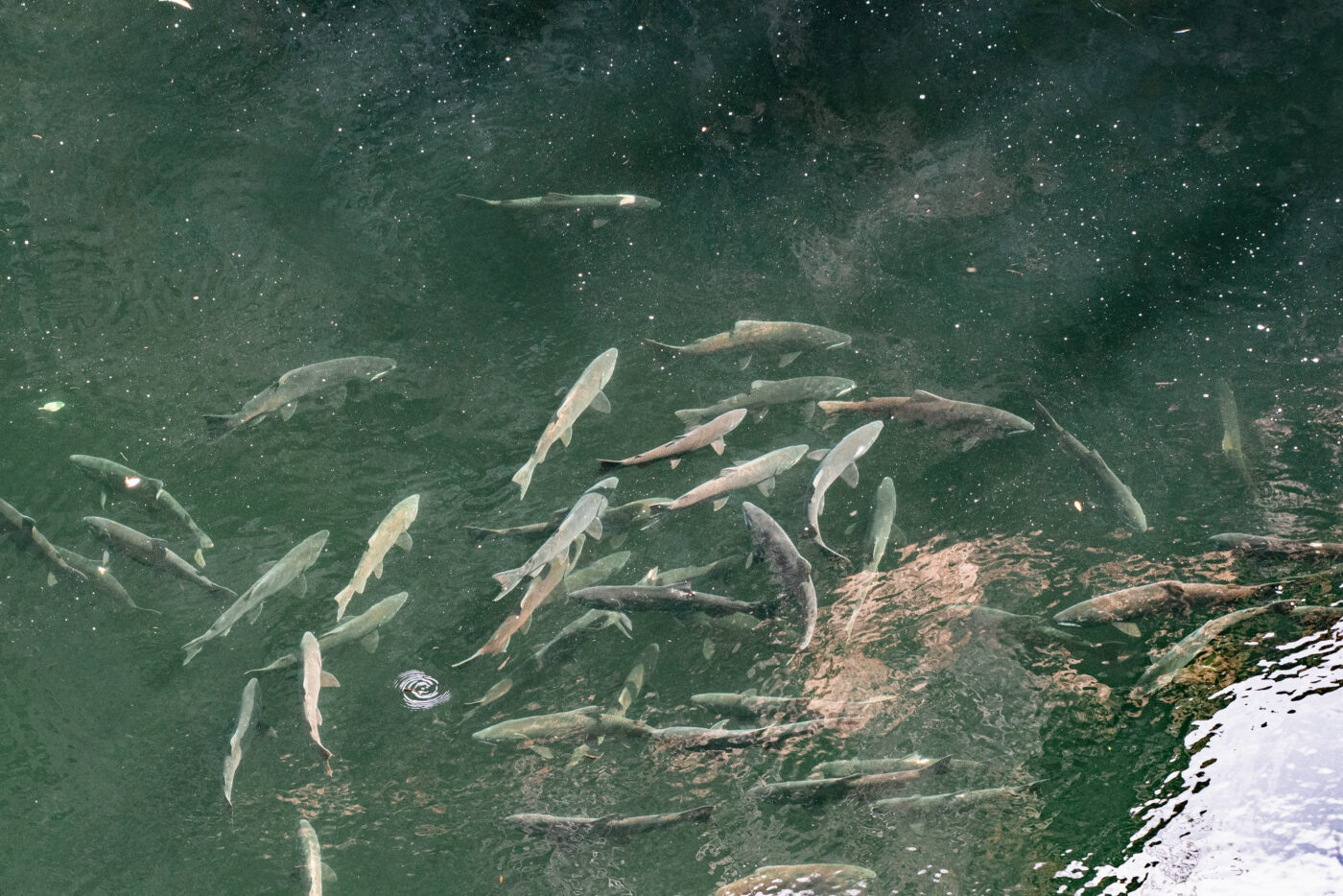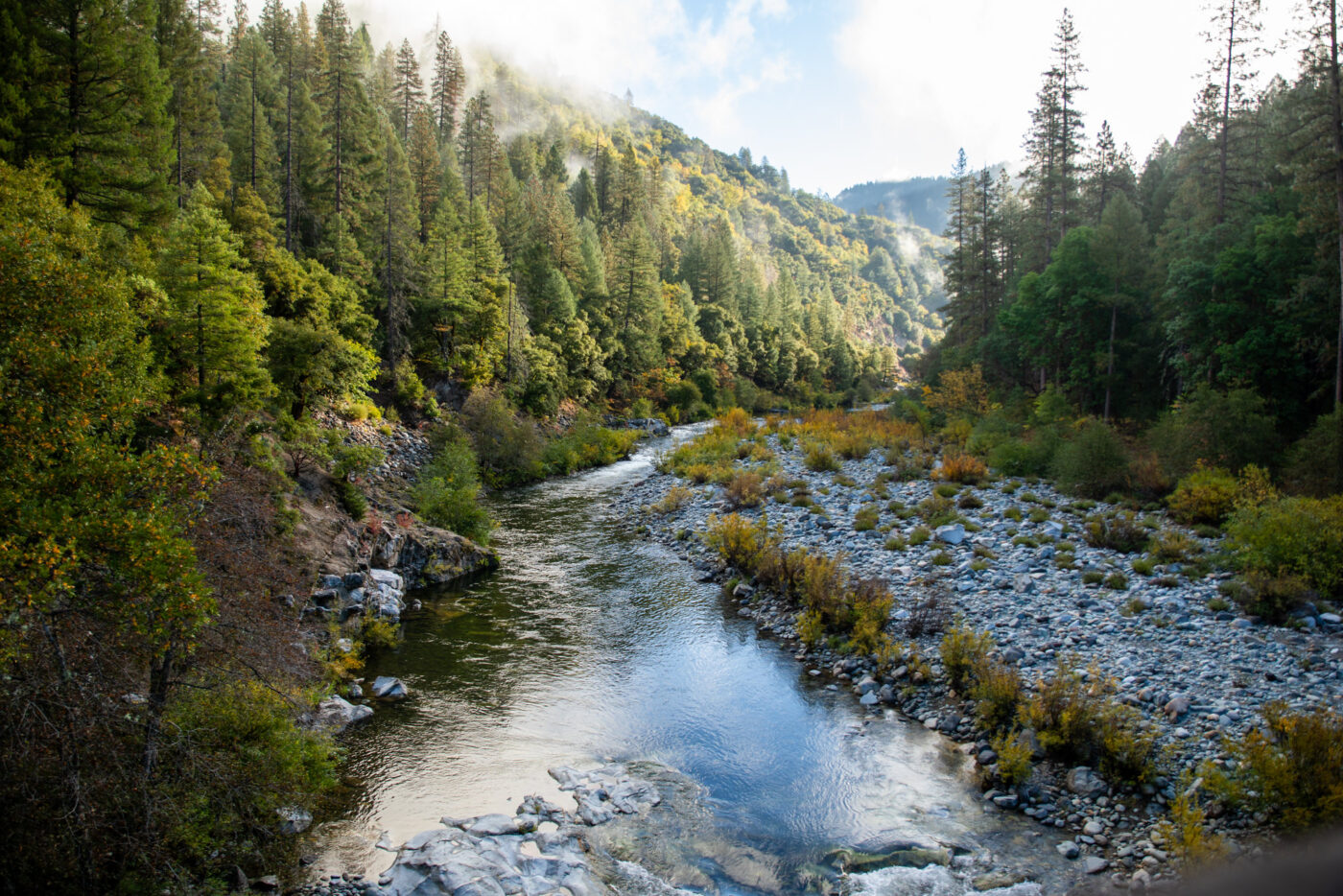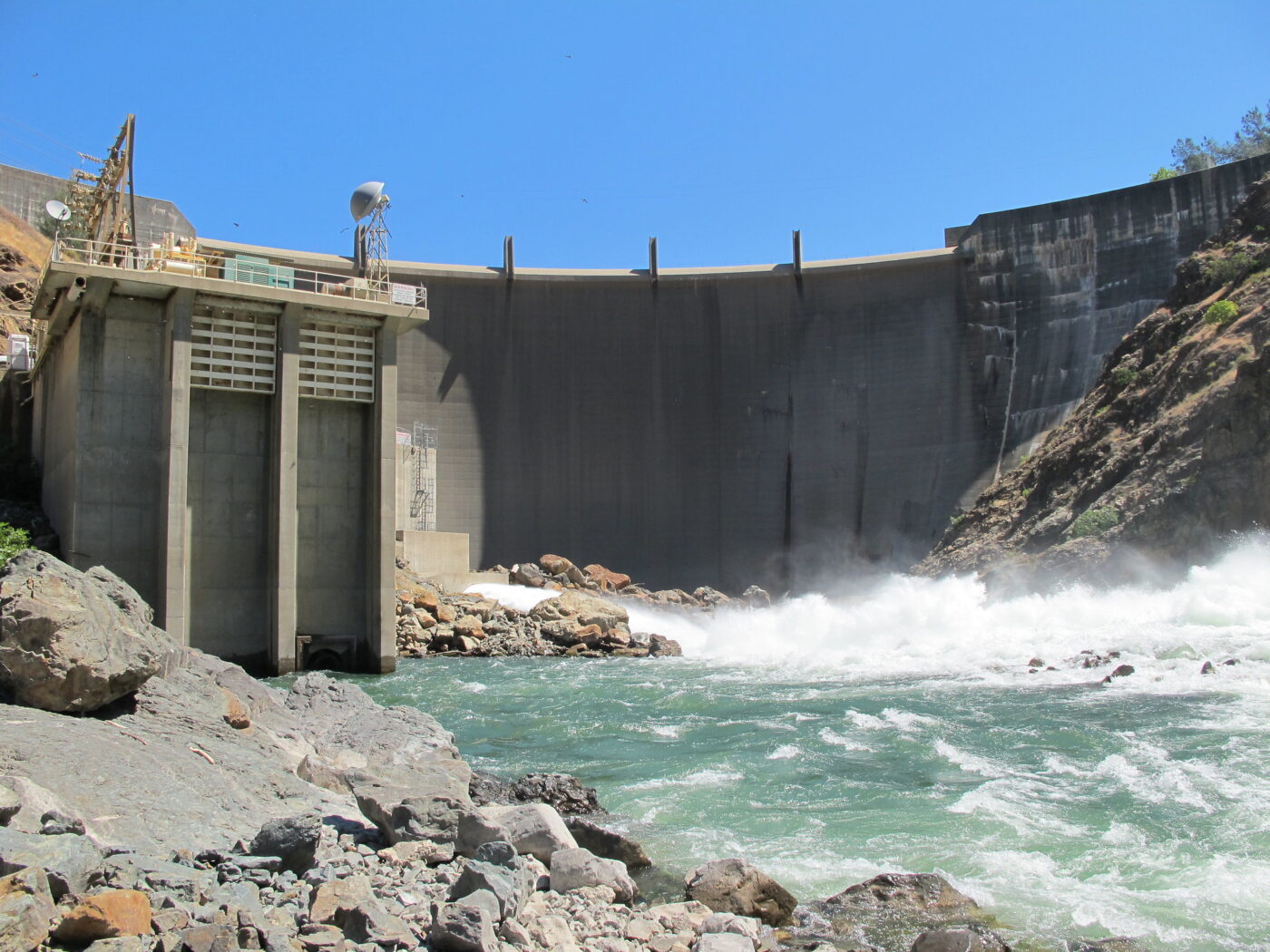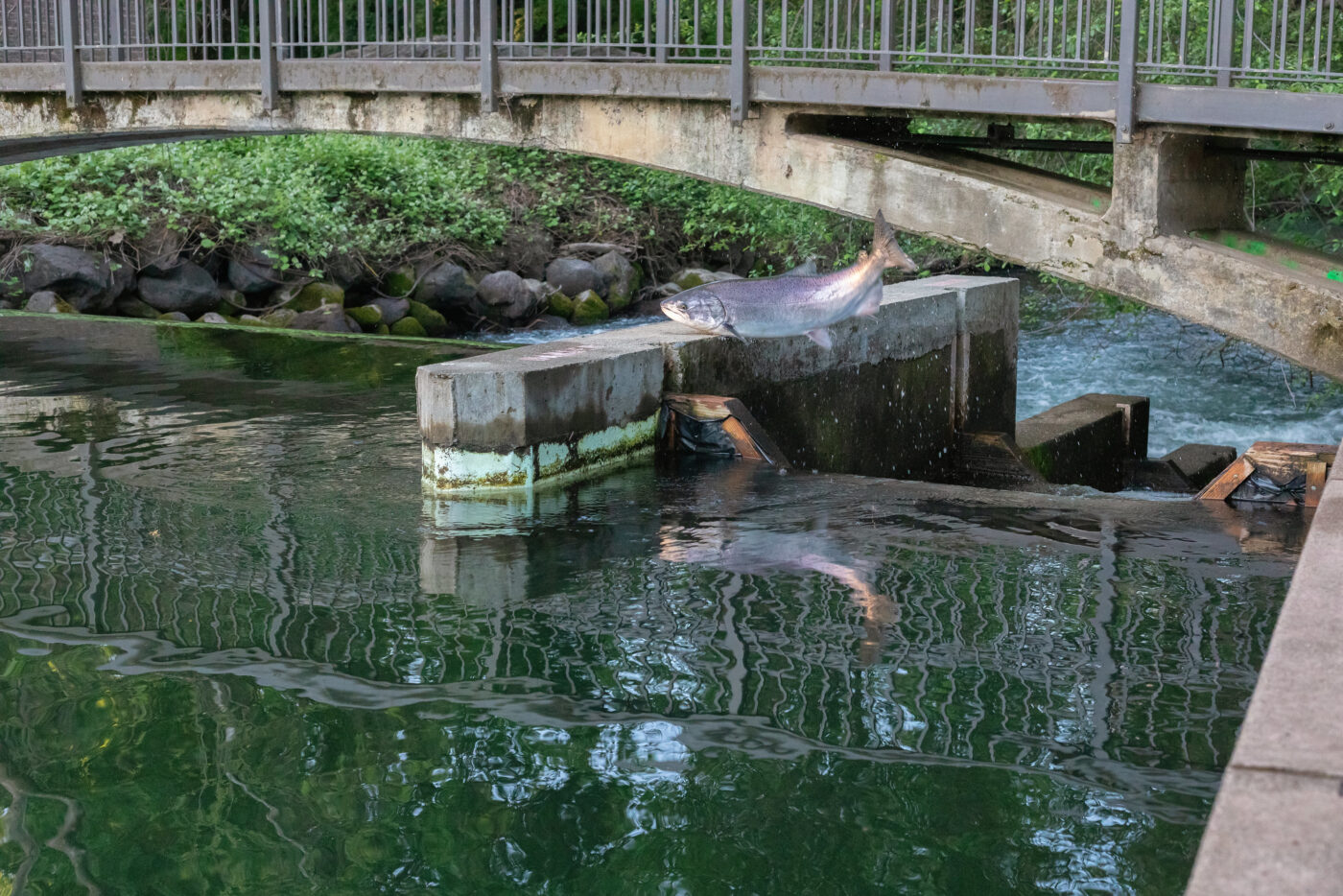Monday August 19, 2024

The Central Valley of California historically contained a diverse tapestry of freshwater habitats, from the salty marshes of the lower estuary to the ice-cold mountain streams of the Sierras. Chinook salmon (Oncorhynchus tshawytscha) developed a remarkable array of strategies to take advantage of these varied habitats, but as habitats have been altered and fragmented, so too has the diversity of Chinook populations. In particular, the Chinook that relied on coldwater habitats to survive in rivers through the summer – such as spring-run Chinook – have lost access to much of their historic range due to dams, and consequently have experienced precipitous declines. As the diversity of Chinook populations diminishes, so does the species’ resilience and adaptability. But all hope is not lost – the findings of a recent study examining the genetics of Chinook in a very modified river in the Sacramento Basin (Hugentobler et al. 2024) suggest that the diversity of these salmon may be more persistent than previously thought.

The Yuba River.
A diverse portfolio of life histories – or the life cycles that animals follow – essentially acts as evolutionary bet hedging by ensuring that not all individuals are following the same strategy. This diversity can be thought of as the raw material that evolution molds into a successful species, and may include traits like age at maturity, size, and migration timing. For Chinook salmon in the Central Valley, the development of genetic diversity allowed them to spread their survival risk across space by inhabiting different habitats, and across time by having varying migratory patterns. However, human-driven changes to the environment have led to dramatic losses of this Chinook “biocomplexity,” with their populations having declined 99% from historic sizes. This drop in numbers has also led to a drop in genetic diversity, and consequently reduced adaptive capacity.

Located 24 river miles above the confluence with the Feather River, Engelbright Dam is the barrier forming the upper limit to migrating Chinook salmon in the Yuba.
Spring-run Chinook salmon, so named because adults of this run migrate upstream in the spring of the year and oversummer in cold headwaters before spawning in the fall, were once the most abundant run of Chinook in the Central Valley. However, much of the headwater habitat that spring-run rely on was cut off by dams, forcing them to spend summers in warmer downstream areas and to spawn in the same habitats as fall-run Chinook. These challenges have led to massive drops in spring-run numbers. Such is the case on the Yuba River, a tributary of the Feather River that once contained a thriving spring-run population, but now restricts fish to below-dam reaches of the river where they must compete with fall-run fish for spawning habitat and other crucial resources. Consequently, the Yuba is the perfect setting for scientists to study if and how spring-run can coexist with other Chinook runs in a highly modified river. In an effort to shed light on the diversity that still exists in the Yuba, researchers collected and analyzed genetic samples from adult salmon in the midst of their migration in the river.
The return timing of fall- and spring-run Chinook has been shown to be associated with variation in a specific part of their genome called GREB1L. The researchers collected and genotyped 194 Chinook collected in the Yuba across three years (2009–2011). Because individuals have two copies of the GREB1L gene – one inherited from each parent – each was identified as either early (meaning they had two copies of the geneotype associated with early migration), late (meaning they had two copies of the geneotype associated with late migration), or mixed (meaning they had one copy of the early geneotype and one copy of the late geneotype). Comparing these genotypes with run timing, they found that genetically “early” individuals arrived much earlier than genetically “late” individuals, and that individuals with mixed genetics arrived sometime in between. Notably, their finding of only few individuals with mixed genetics suggests that the early and late life histories appear to have been maintained despite their physical overlap due to the presence of dams, a process that is likely driven by differences in spawning time between the two groups.

A spring-run Chinook salmon moves upstream through a fish ladder.
These findings demonstrate that analysis of the GREB1L genotypes can be used to detect, monitor, and estimate the abundance of different Chinook run types. As genetic technologies improve, it is becoming increasingly easy to gather this genetic data rapidly, even out in the field. Further, the fact that spring-run are still present in the Yuba suggests that this unique life history can persist even in altered river systems, and this gives scientists hope that ongoing efforts to reconnect upstream habitats may help spring-run numbers to increase. All runs of Chinook will have to continue to adapt as the climate and landscape of California continues to shift over time. With improved understanding of genetics, fisheries managers can work to make sure fish populations have the diversity they need to allow for critical adaptation in ever changing rivers.
Header image: Spring-run Chinook salmon (Oncorhynchus tshawytscha) congregate in a pool.
This post was featured in our weekly e-newsletter, the Fish Report. You can subscribe to the Fish Report here.
